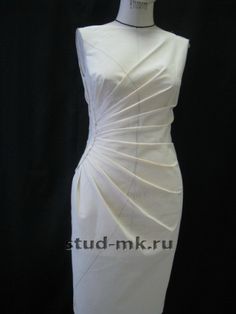- Teacher: ألاء أشرف السيد محمد .
- Teacher: رحاب محمود قطب على .
- Teacher: كاميليا موسى محمد الزينى .
- Teacher: هبة زكريا محمد أبو حشيش .

B- Professional Information
1– Overall aims of course
To recognize the different physical and mechanical textile testing, understand its importance and usage.
2– Intended learning outcomes of course (ILOs)
a- Knowledge and understanding:
a1- list of classification of textile testing.
a2- define the physical and mechanical testing.
a3-Outlines of testing and inspection of textile.
a4-illustrate the fiber test.
a5- Describe different yarn tests and its apparatus.
a6- Recognize the different fabric testing and the method of measurement.
a7- Identify the most common failures appear in sewing the garment and how to avoid them.
a8- identify the Fabric Objective Measurement System
a9- identify about FAST system and KEF system.
a10-define Objective evaluation of fabric handle.
b- Intellectual skills
b1-Illustrate the importance of Textile Testing
b2-Explain the importance of textile testing.
b3-explain the standard conditions for testing.
b4-describe the Baer sorter apparatus.
b5-Illustrate the factors effects on fibers Fineness.
b6-differentiate qualitative test and quantitative test.
b7-differentiate between physical and mechanical testing.
b8-mention methods used to determine and measure the yarn evenness.
b9-describe the Thickness gauge.
b10- describe Shirley crease recovery tester.
b11-interprt FAST control chart
b12-explain the Pilling property in fabric.
b13-illustrate Bursting strength test.
b14- Discuss an apparatus of textile testing.
c- Professional and practical skills
c1-Effective for understand the variation of testing method.
c2- Recognize with ease the difference between the physical and mechanical test.
c3- Accurate understand of the most common testing method of yarn and fabric.
d- General and transferable skills
d1-use internet site.
d2-know the different physical and mechanical testing.
d3- use group working and self-learning.
1– Overall aims of course
To recognize the different physical and mechanical textile testing, understand its importance and usage.
2– Intended learning outcomes of course (ILOs)
a- Knowledge and understanding:
a1- list of classification of textile testing.
a2- define the physical and mechanical testing.
a3-Outlines of testing and inspection of textile.
a4-illustrate the fiber test.
a5- Describe different yarn tests and its apparatus.
a6- Recognize the different fabric testing and the method of measurement.
a7- Identify the most common failures appear in sewing the garment and how to avoid them.
a8- identify the Fabric Objective Measurement System
a9- identify about FAST system and KEF system.
a10-define Objective evaluation of fabric handle.
b- Intellectual skills
b1-Illustrate the importance of Textile Testing
b2-Explain the importance of textile testing.
b3-explain the standard conditions for testing.
b4-describe the Baer sorter apparatus.
b5-Illustrate the factors effects on fibers Fineness.
b6-differentiate qualitative test and quantitative test.
b7-differentiate between physical and mechanical testing.
b8-mention methods used to determine and measure the yarn evenness.
b9-describe the Thickness gauge.
b10- describe Shirley crease recovery tester.
b11-interprt FAST control chart
b12-explain the Pilling property in fabric.
b13-illustrate Bursting strength test.
b14- Discuss an apparatus of textile testing.
c- Professional and practical skills
c1-Effective for understand the variation of testing method.
c2- Recognize with ease the difference between the physical and mechanical test.
c3- Accurate understand of the most common testing method of yarn and fabric.
d- General and transferable skills
d1-use internet site.
d2-know the different physical and mechanical testing.
d3- use group working and self-learning.
- Teacher: إيناس محمد عبد الفتاح .
- Teacher: رانيا نبيل شاكر .
- Teacher: شيماء حسن عبدالرحمن .
- Teacher: وفاء انور السيد على .
- Teacher: أحمد مصطفى أحمد المصري .
- Teacher: شيماء حسن عبدالرحمن .
- Teacher: رانيا نبيل شاكر .
- Teacher: نجاح سيد عاشور على .

over all aims
This course aims to teaching the students how to draping techniques and performing the different designs for the soiree dresses.
2– Intended learning outcomes of course (ILOs)
a- Knowledge and understanding:
a1- Revision on draping techniques and terms.
a2- Mention the different types of required fabrics.
b- Intellectual skills
b1-Apply the draping techniques on different types of fabrics.
b2-Creating garments through draping on the dress form.
b3- Manipulating the fabrics to achieving the require patterns by draping.
c- Professional and practical skills
c1- Accurate individual’s skills to grainline placement for proper design.
c2- Harmonized garment design with an emphasis in draping on the dress form .
c3- Effective the elements and principles.
d- General and transferable skills
d1- changing attitudes.
d2- changing behaviors.
D3- knowledge of some major information for draping on the dress form.
This course aims to teaching the students how to draping techniques and performing the different designs for the soiree dresses.
2– Intended learning outcomes of course (ILOs)
a- Knowledge and understanding:
a1- Revision on draping techniques and terms.
a2- Mention the different types of required fabrics.
b- Intellectual skills
b1-Apply the draping techniques on different types of fabrics.
b2-Creating garments through draping on the dress form.
b3- Manipulating the fabrics to achieving the require patterns by draping.
c- Professional and practical skills
c1- Accurate individual’s skills to grainline placement for proper design.
c2- Harmonized garment design with an emphasis in draping on the dress form .
c3- Effective the elements and principles.
d- General and transferable skills
d1- changing attitudes.
d2- changing behaviors.
D3- knowledge of some major information for draping on the dress form.
- Teacher: سمية حامد لبيب متولي .

